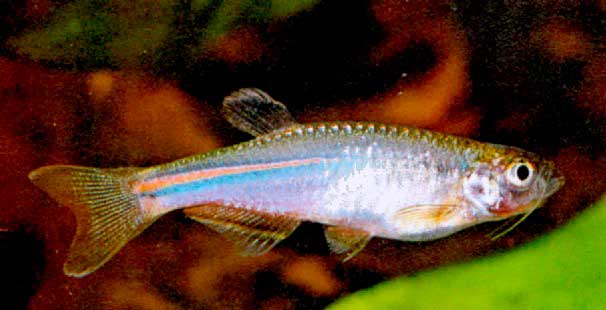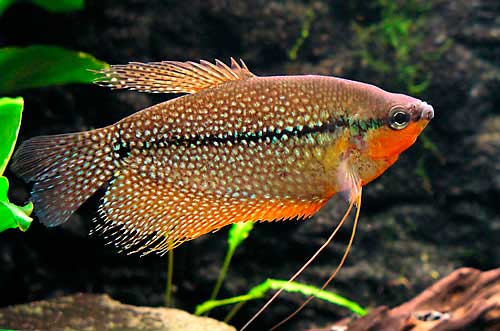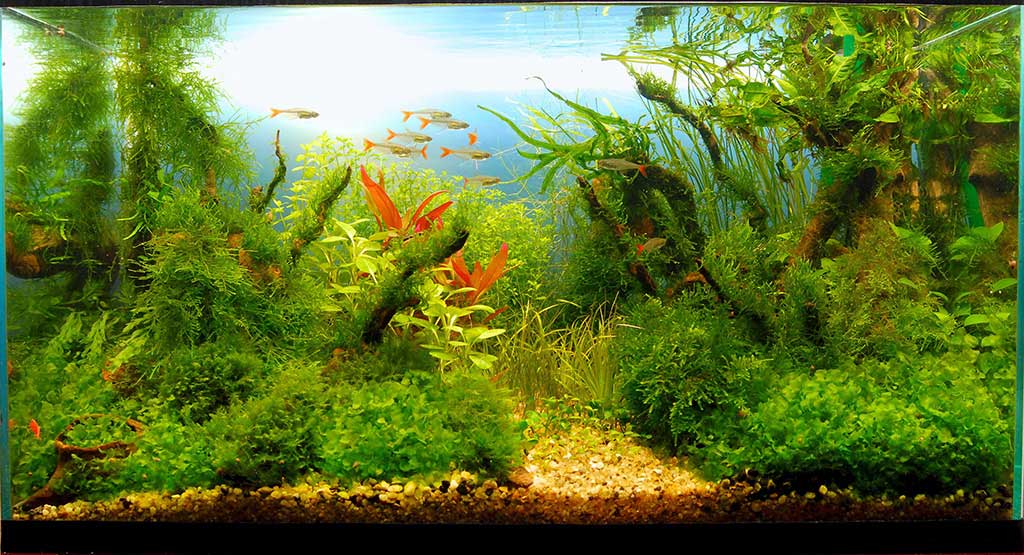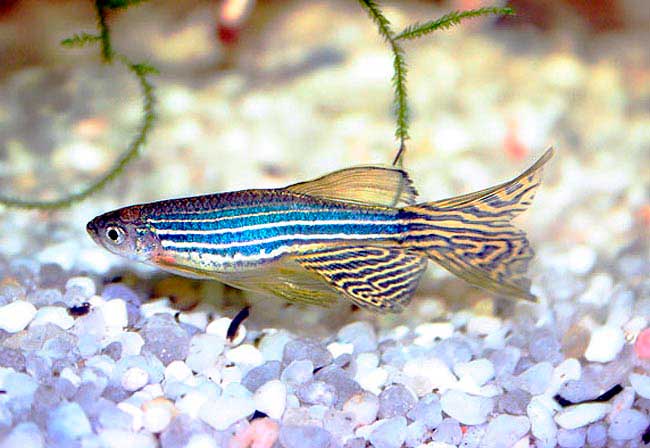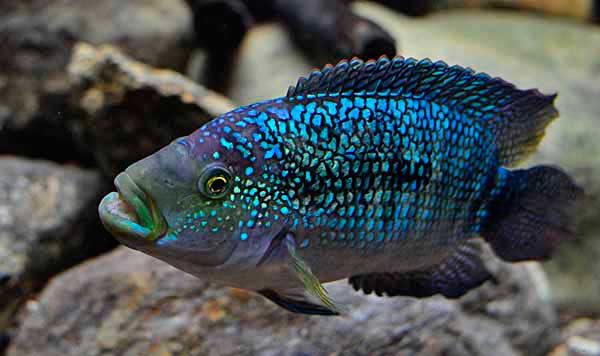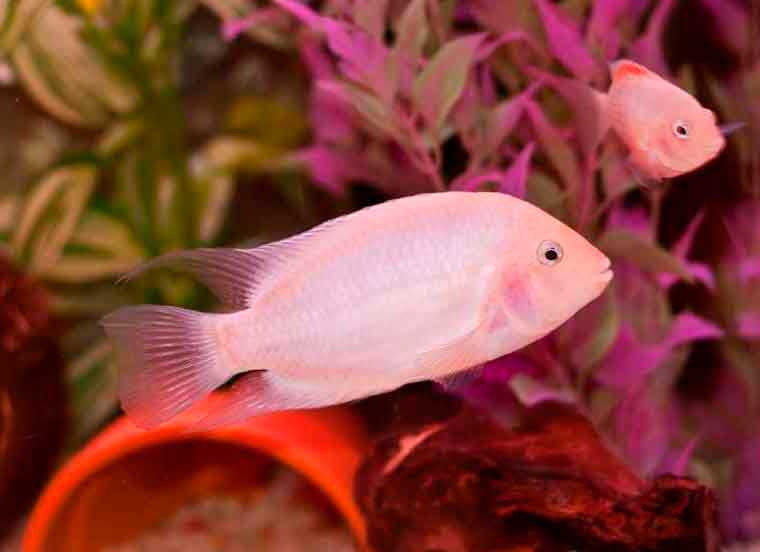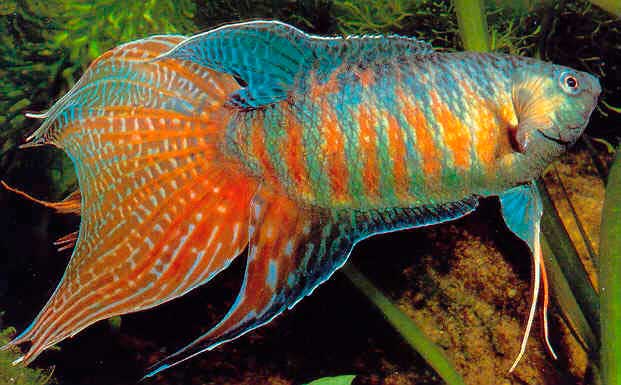Brachydanio albolineatus first appeared in European aquariums in 1911 and since then has been a constant inhabitant of them. This is due to its unpretentiousness, peaceful playful disposition and high ability to reproduce. It can be kept in a common aquarium.
And its breeding and maintenance is under the power of even a novice amateur. One of the names – Danio pearl shows how beautiful the fish can be in the right light. And if you decide to create a collection of representatives of the genus Danio without this species you can not do without.
| kingdom | Animals |
| type | Chordates |
| class | Bony fish |
| division | Carp |
| Family | Carp |
| genus | Danio |
Lat: Brachydanio albolineatus
Habitat.: Inhabits the rivers and streams of Sumatra Island, Myanmar, Thailand.
Brachydanio albolineatus description
The pearl danio has an oblong body barely flattened on the sides. The length of the body reaches six centimeters. It has two pairs of antennae. The coloration is silvery with blue or greenish pearlescent cast. From the tail to the middle of the body stretches pinkish wedge with blue edging. In young fish this wedge is more pronounced. In adults, it may disappear completely.
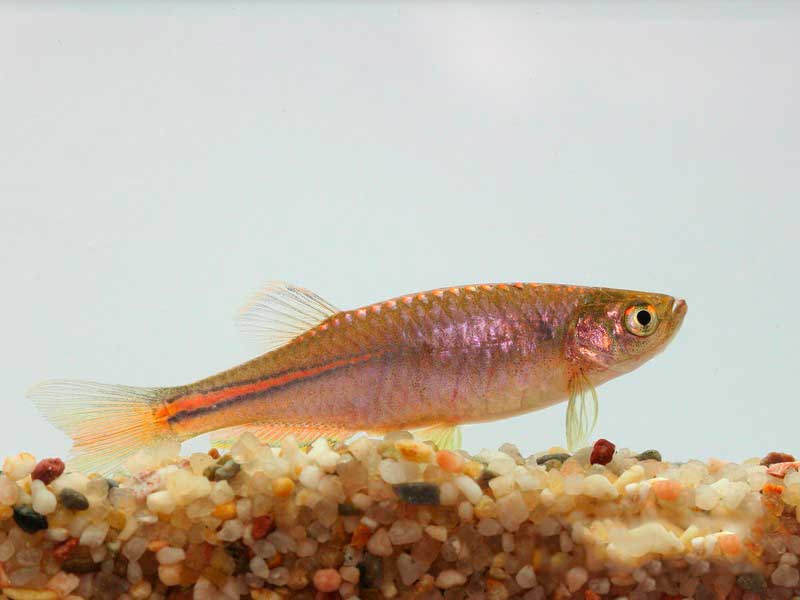
The caudal and dorsal fins are green. The anal fin has a pink coloration. Representatives of the species are excellent swimmers, accustomed to withstand a fairly powerful stream flow in their natural habitats. Prefer to be in a flock. Danio pearl keeps in the upper and middle layers. In aquarium conditions live about five years.
Brachydanio albolineatus Differences between the sexes
The pearl danio reaches sexual maturity at six to eight months of age. Males are somewhat slimmer than their mates and have a brighter coloration especially at a young age.
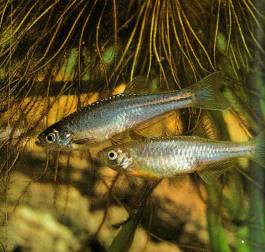
Brachydanio albolineatus aquarium maintenance
For maintenance in the home is desirable oblong aquarium volume of about 50 liters, a height of about thirty centimeters. It is necessarily necessary to cover it with a cover glass or a lid. Since aquarium fish Brachydanio albolineatus not only excellent swimmers, but also jumpers. But with piloting is not so good. And not to be upset about the unsuccessful landing past the water surface, it is better to prevent flight outside the native reservoir.
Soil
As a soil you can use granite fine crumbs, pebbles, coarse clean river sand.
Plants
Small-leaved plants are planted along the back and side walls. Along the front window, leave an open space for swimming.
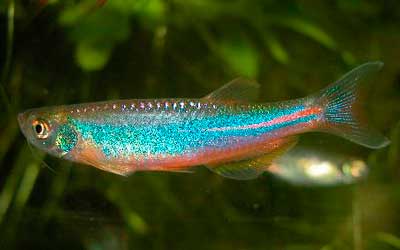
Water parameters
To the chemical composition of water danio pearl is not demanding. For the species Brachydanio albolineatus salt content in the water is not very important. Withstands hardness up to 20 °dH. pH – 6-7,5.
Optimal temperature for maintenance is 18 – 22°C.
It is necessary to provide filtration and artificial aeration of the water. Once a week, replace one fifth of the water with fresh, tempered water.
Lighting should be bright. It is better to use fluorescent daylight bulbs LB. Has
It is important where to place these lamps. It is better if they are located along the front window of the aquarium. In the oblique rays falling from above pearl danio will win more in coloration than in the upper or side lighting. It is desirable that at least a couple of hours a day in the aquarium in the sunlight.
Brachydanio albolineatus Compatibility
Aquarium fish Brachydanio albolineatus, like other members of the genus is a very peaceful fish. It can be kept with other species with suitable conditions and not very bully character.
Feeding
The pearl danio has an excellent appetite. It eats all kinds of live and dry food of suitable size. You can feed moths, bark, daphnia, young artemia. They will pick up from the water surface and small insects.
Brachydanio albolineatus breeding
For spawning, two males are set aside for one female. Sometimes practiced group spawning with the same sex ratio. Females, as in other species of this genus are subject to the formation of cysts, which makes it infertile. And since the decanting of eggs in small fish is problematic, it is better to select females under a year old for spawning. The choice of males is less complicated.
About two weeks before spawning females are deposited from males, kept separately and abundantly fed live food (moths, trumpet fish, enchitrei). During this time, the abdomen of the female is strongly rounded, which indicates her readiness for spawning.
Preparing the spawning ground
For breeding Brachydanio albolineatus set up a spawning ground of 10 liters per female.
A separator net is placed on the bottom, which should cover the entire bottom and be about two centimeters above the bottom. Instead of a separator net, you can use small-leaved plants pressed to the bottom with small stones. Water for breeding Brachydanio albolineatus should be freshly tempered. About one-third – boiled to obtain optimal hardness. It is still better to control it. It should be no more than 10°dH. pH = 7. The temperature when planting the fish in the spawning tank should be the temperature at which they were kept until then. The water level should be no more than 5 – 8 centimeters above the separator net.
Нерест
In the spawning tank in the evening placed first males, and after a few hours and females. Set the temperature on the thermostat 4 – 6 degrees higher. It should be 26-28 ° C. And after this in the spawning tank turn off the light. In the morning of the next day with the first rays of sunlight or with the inclusion of artificial lighting begins spawning.
It lasts for several hours. During this time, the female hatches up to two hundred eggs of delicate milky color. After spawning is over, it is necessary to remove the spawners from the spawning area. You can remove the plants and separator net carefully and thoroughly shake off the eggs.
Incubation lasts about one and a half to two days. And after another three to four days, the fry will swim, and they will need to feed infusoria, nauplii Artemia, live dust. As the growth of fry should be transferred to larger feed and in a larger aquarium. Fry reach sexual maturity at six to eight months.
Breeding Brachydanio albolineatus is not difficult, but requires care. And you will definitely be rewarded for your efforts.
Brachydanio albolineatus is a worthy representative of the genus Danio. Danio pearl can decorate the aquarium of both experienced and novice amateur. His playful disposition and high mobility will enliven any underwater landscape. And its delicate tones contrast well with the bright colors of other tropical fish. I hope you liked a new acquaintance – Brachydanio albolineatus.
